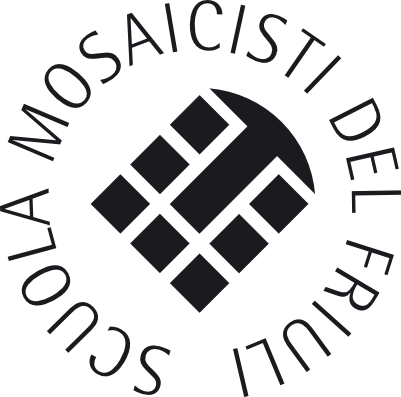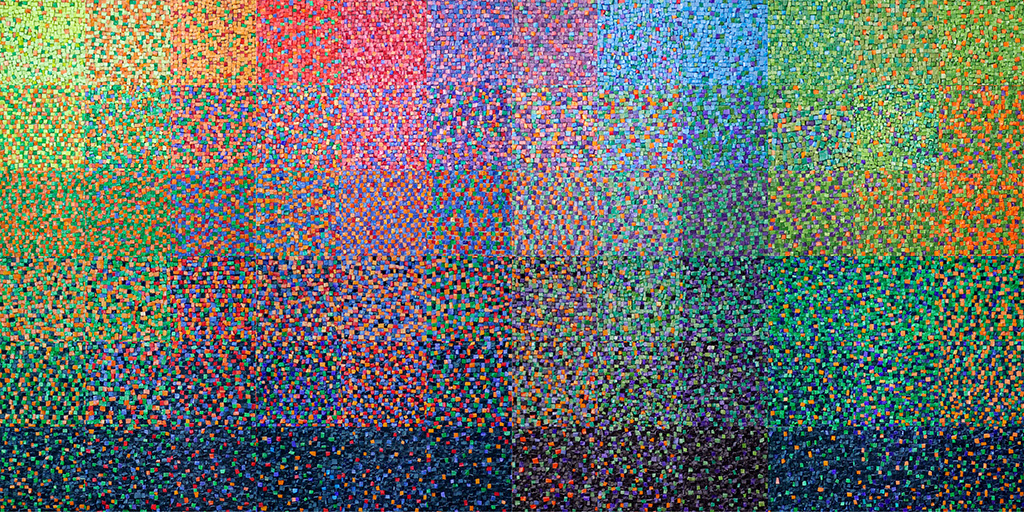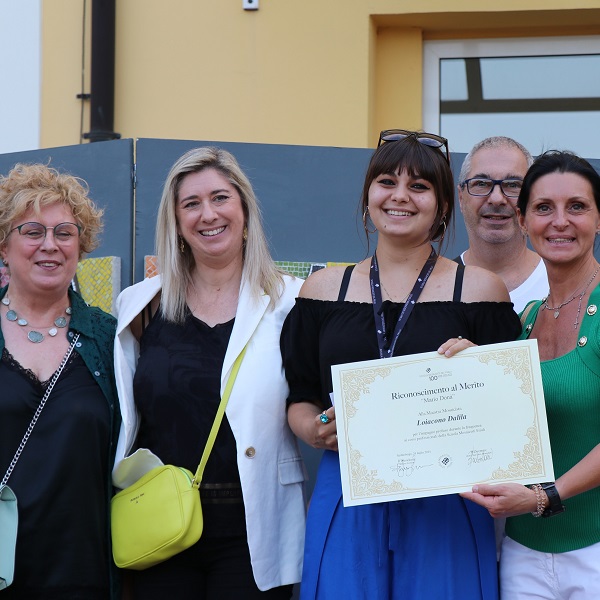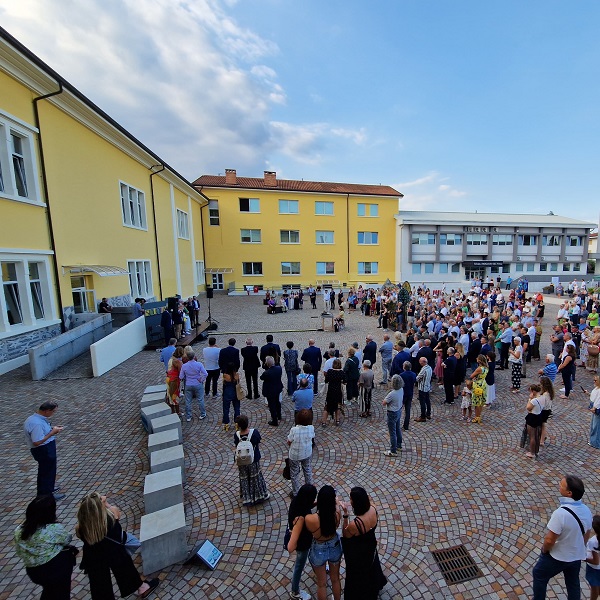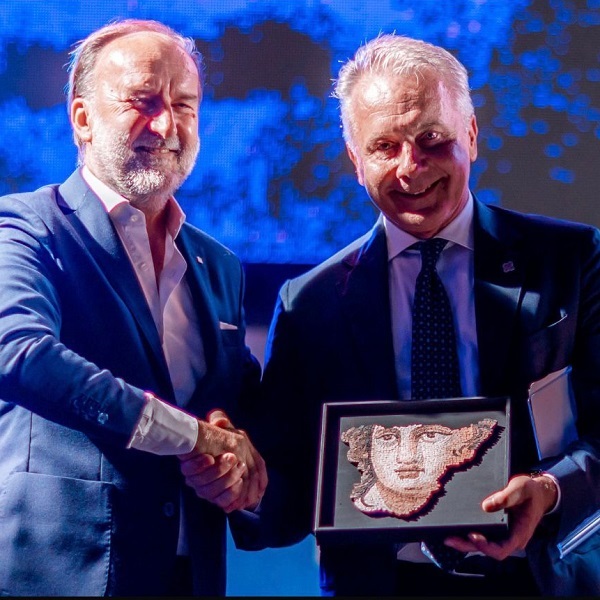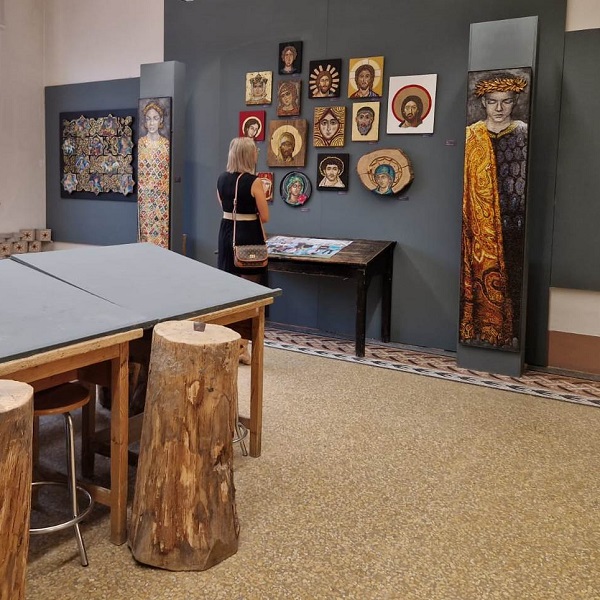
Last week for Mosaico&Mosaici 2024
Just a few more days to visit the Mosaico&Mosaici exhibition at the Scuola Mosaicisti del Friuli: an unmissable event that is renewed every year, but always different and original. A way to learn about the art of mosaic in its expressive, functional and contemporary declinations.
The Mosaico&Mosaici exhibition will end on Sunday 25 August 2024, the flagship event of the Scuola Mosaicisti del Friuli, born as a format thirty years ago to exhibit and share the best of the activity carried out during the past training year. It is a complex and rich exhibition which develops in the spaces of the School set up for the occasion and which offers mosaics, projects, drawings, technical tests and experiments, academic copies in the wake of tradition or innovative and adaptable solutions where they are put to good use creativity and knowledge of technique and materials. A selection of what has been done in the past months described not only with the mosaic works, but also with photographs and testimonies of that laboratory-based executive process that distinguishes the teaching and learning practice at the Scuola Mosaicisti del Friuli.
Professors and students must therefore be applauded for the activity carried out during the 2023/2024 training year, the outcome of which is the Mosaico&Mosaici exhibition with its rooms dedicated to Roman mosaics, floor mosaics par excellence, to Byzantine mosaics with themes not only sacred, to the modern mosaic technique, smooth and with non-existent joints, capable of covering large surfaces, up to the contemporary in its abstract solutions and in the facets connected to furniture and design. A journey into the history of mosaic art which, in following a chronological development, also traces its technical and stylistic evolution and reflects the three-year professional path to becoming a Master Mosaicist.
The exhibition highlights the educational journey made up of skills and abilities acquired with study, practice, patience and dedication and among the many works that are enjoyable and appreciable even by the most demanding visitors, we would like to point out here some curiosities not to be missed. There is a room dedicated exclusively to the terrace where not only is this type of flooring presented which has a long tradition in the Spilimbergo area, but with different proposals and samples decorative motifs and executive solutions suitable for current living spaces are offered.
Roman mosaic is learned through copies from famous archaeological sites. These are group works: even the three steles that spectacularly close the first room of the exhibition are born from a collective commitment and in this case draw inspiration from Suzani carpets: the Roman square tile is capable of drawing elegant and delicate floral decorative motifs through the right combination of natural materials so neutral to light. The Byzantine style mosaics with brilliant Venetian enamels are a completely different matter: in the third room, dedicated to the parietal technique that distinguishes the medieval centuries, the large panel with the Archangel Gabriel, a figure chosen from a larger scene that decorates the apse of the Panagia Angeloktisti Church (6th century) on the island of Cyprus and reveals technical and conceptual affinities with the mosaics of Ravenna, and the interpretation of the glazed ceramic tiles that made up the floor of the Church of San Francesco in Deruta, today preserved in the local ceramic museum. In this latest work each student translated a pair of tiles into a mosaic which, when placed together, amplify the precious details of the original floor.
In the lessons dedicated to the mosaic of the modern age, that of the indirect technique also known as reverse on paper (a technique that was developed by Gian Domenico Facchina -Sequals, 1826 – Paris, 1903-, author of the vast mosaic decoration of the Opera di Paris, and of which the Scuola Mosaicisti del Friuli is heir) the panel with an Art Nouveau motif was developed which became the guiding image for Mosaico&Mosaici 2024. It is the mosaic translation of a floral design for fabric signed by the Friulian artist Angiolo D’Andrea (1880-1942) who made his fortune in the rampant Milan of the early twentieth century. In this technique also the most classic sacred icons, and for those who love nature, the lively pictures with flowers and birds.
Among the many projects dedicated to contemporary mosaic, note the research connected to fabric, where the mosaic imitates the texture and embroidery through the cutting and positioning of the tiles, taking as a model some works of the Orsoline of Gorizia, admired last year in the rooms of the Musei Provinciali of Borgo Castello, or the exploration in the leather goods sector with the creative challenge proposed to the School by the Pordenone company Dudu Bags to weave mosaic with leather into feminine bags that become unicums, true art objects . For furnishings, it is worth mentioning the interdisciplinary project of iconic mosaic-covered benches of which the concepts as well as the covering samples are exhibited.
The sequence of small works that describe bookcases is fun and immediate: they are imaginary spaces populated by books and are the result of the meeting with the mosaic artist Daniele Strada.
The last room of Mosaico&Mosaici, before going up to the first floor of the Scuola Mosaicisti del Friuli and enjoying the permanent gallery of mosaics, entering the room of project ideas, seeing the drawing laboratory, visiting the small exhibition with archive drawings and projects of famous artists who have collaborated with the School, the last room of the exhibition therefore allows you to learn about what the School has achieved in the last year in the area. The large mosaics are documented, commissioned by external parties, which the students of the specialization course (a fourth year of specialization for those who have already qualified as Master Mosaic Artist) followed in the design, execution and installation, such as the monumental wall for the Civic Library of Corno di Rosazzo or the mosaic “tangram” The tree of knowledge for the G. Narvesa primary school in Pordenone, until discovering, as a preview, the large mosaic panel which will be located in San Giorgio della Richinvelda in autumn.
The collateral exhibition Volti mosaici: Icons of art is added to the Mosaico&Mosaici exhibition, hosted in the nearby Scuola building, overlooking Viale Barbacane. It is a review of portraits of well-known personalities, curated by the Naonis cultural association, executed in mosaic by students of the School, which are combined with high-resolution blow-ups which allow for a greater appreciation of the details and the results of intensity that the technique of mosaic achieves in this genre, in the care not only of the rendering of the physiognomic features, but also of the character of the subject.
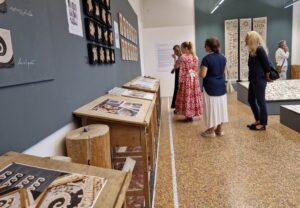
MOSAICO&MOSAICS 2024 exhibition
JULY 27 > AUGUST 25, 2024
It can be visited every day from 10.00 to 12.30 and from 16.30 to 20.00.
For information, contact the School Secretariat directly:
tel. +39 0427 2077 / fax. +39 0427 3903
e-mail: info@scuolamosaicistifriuli.it
August 19, 2024


